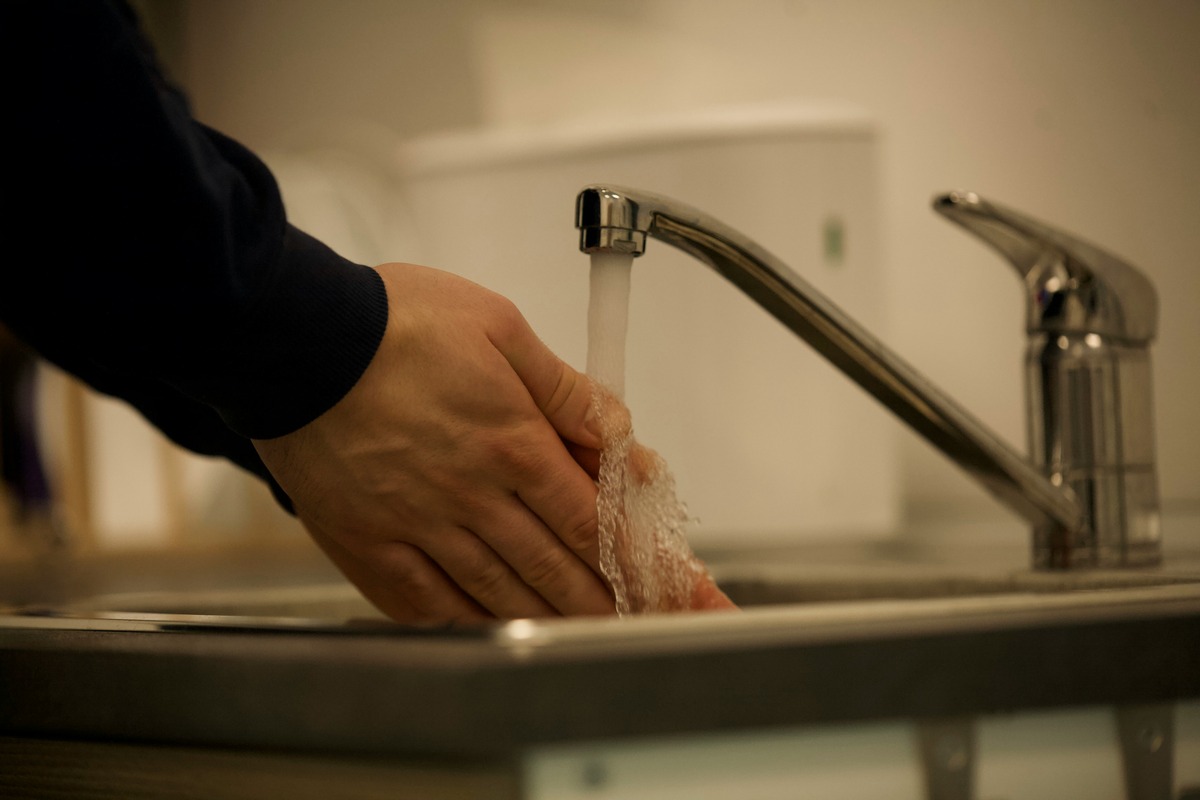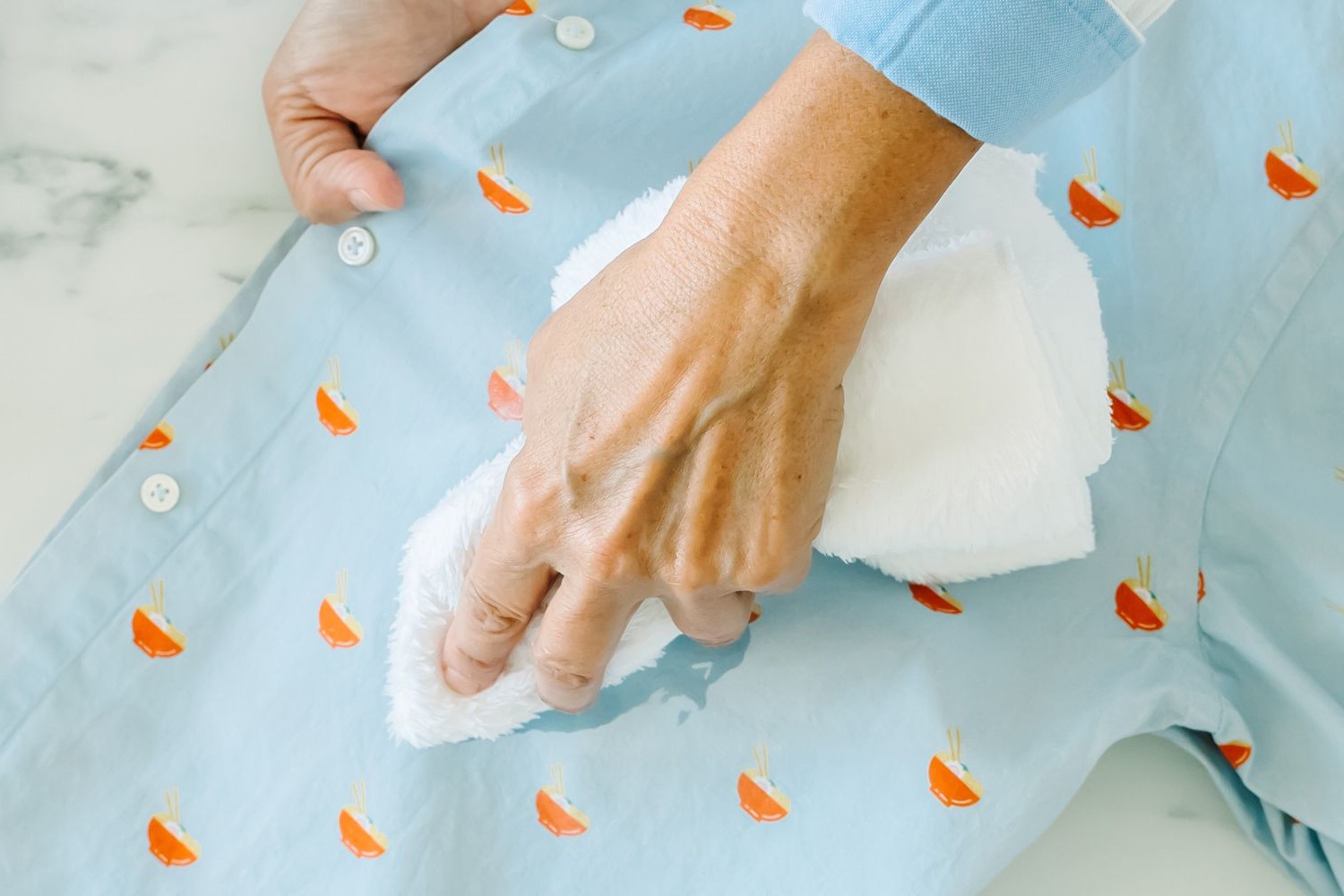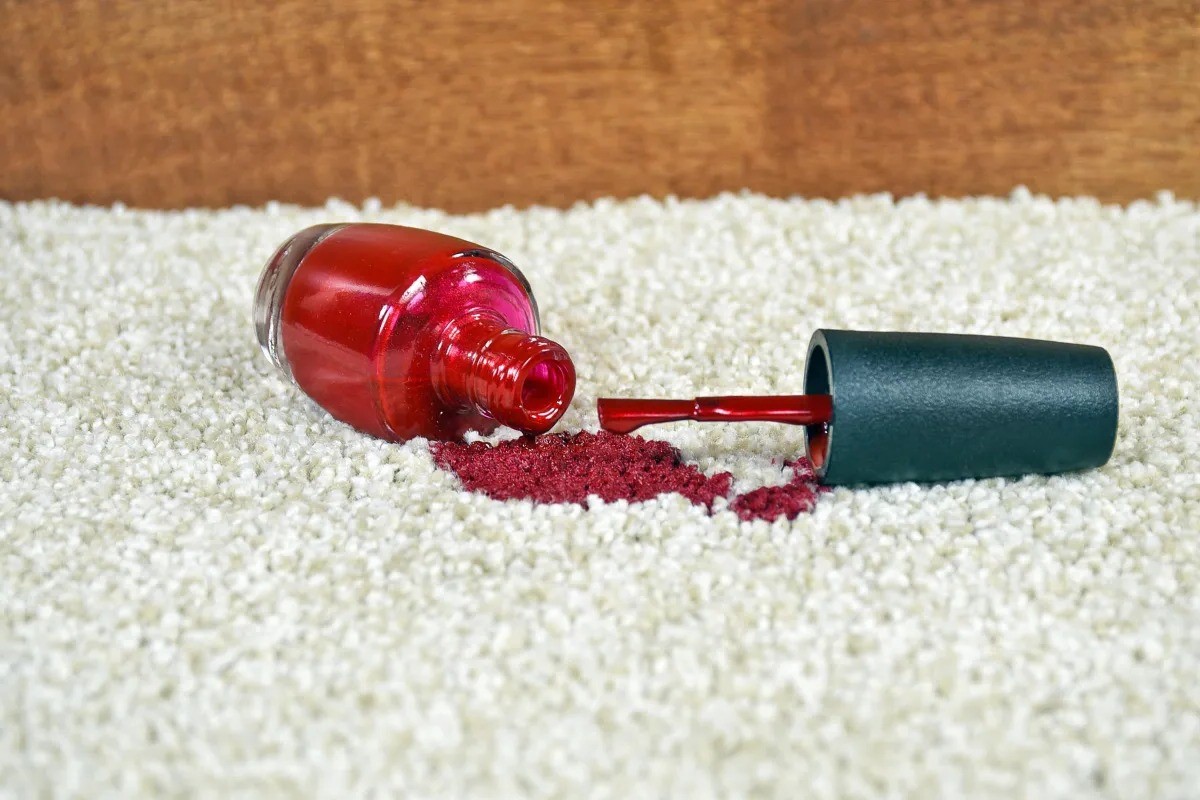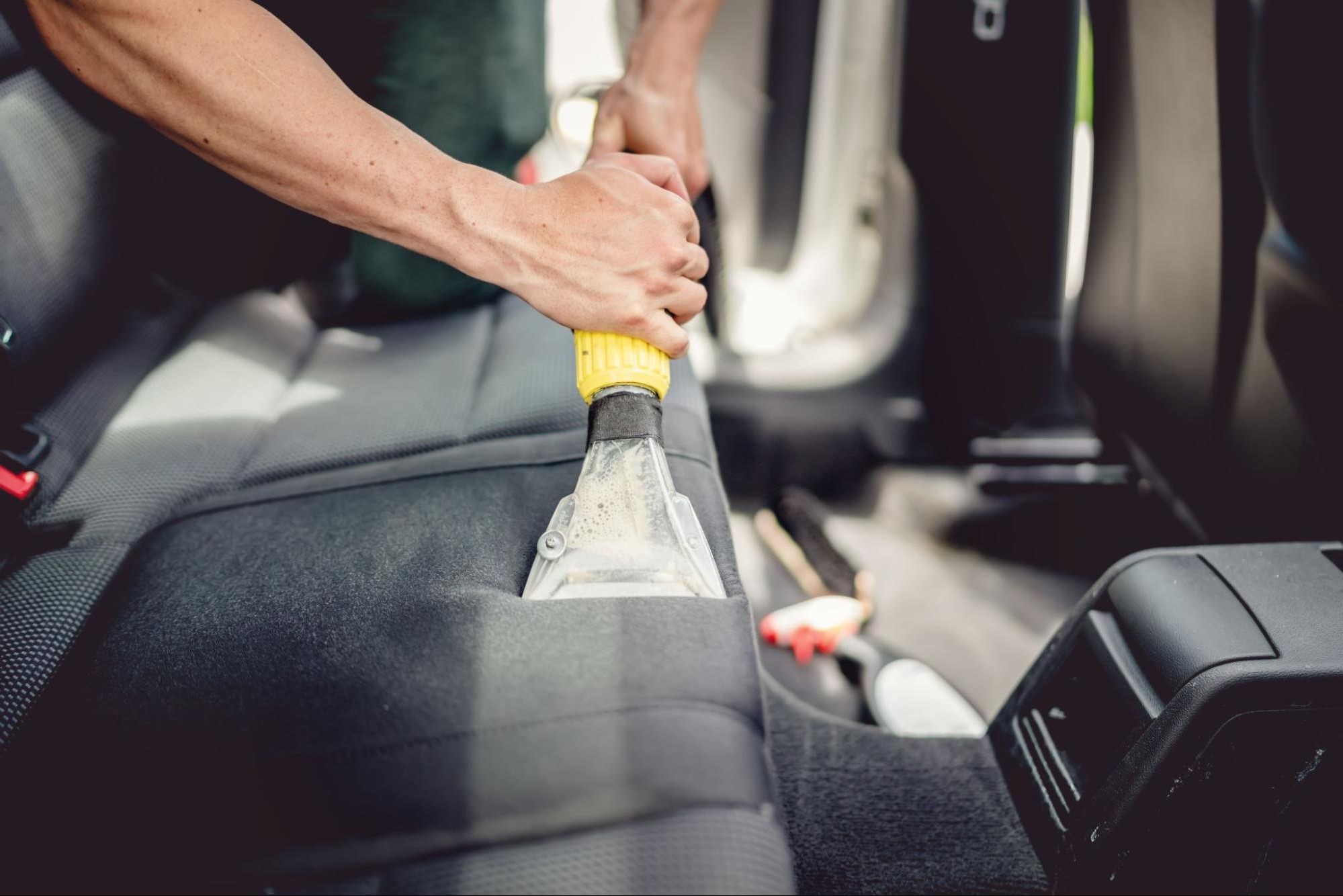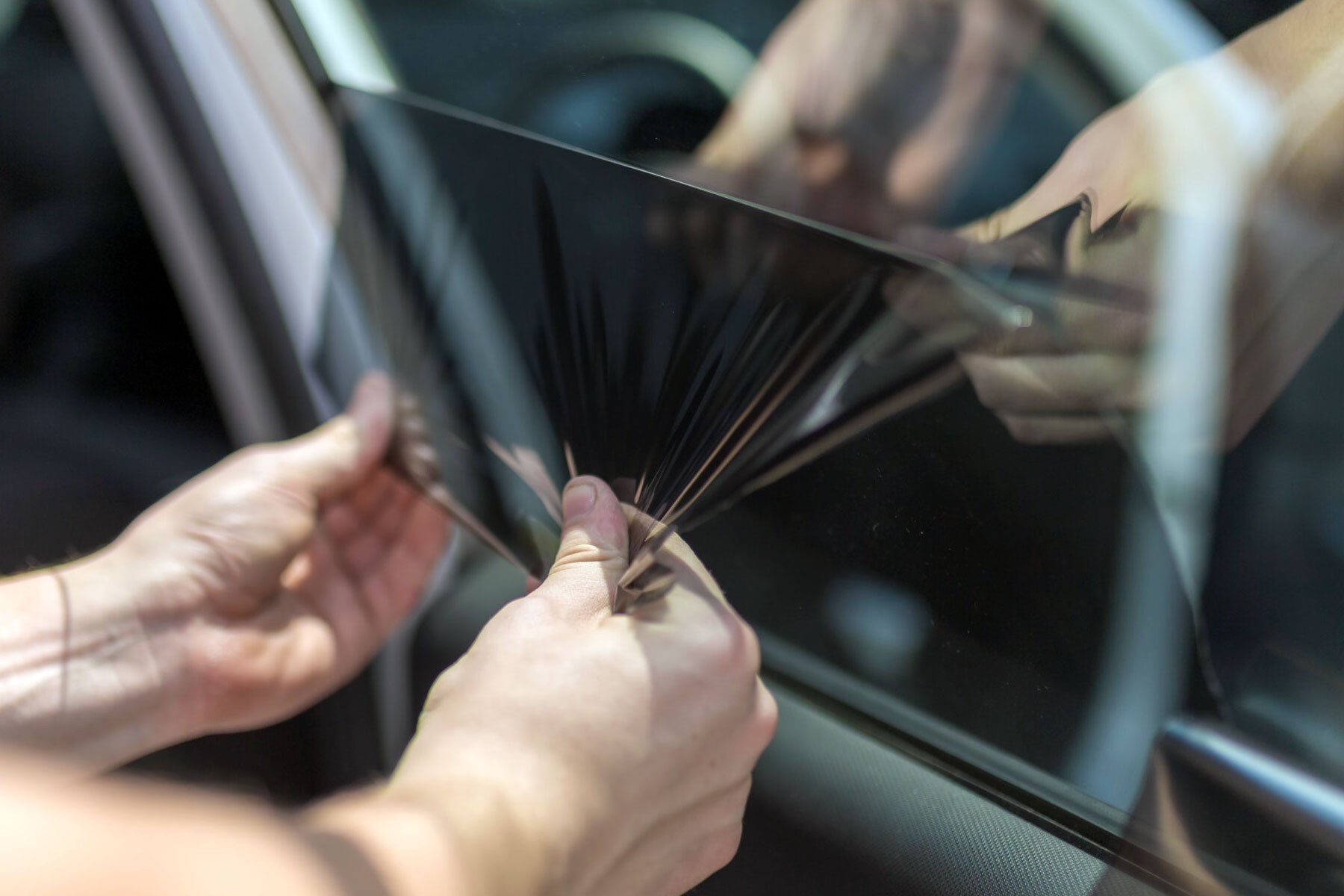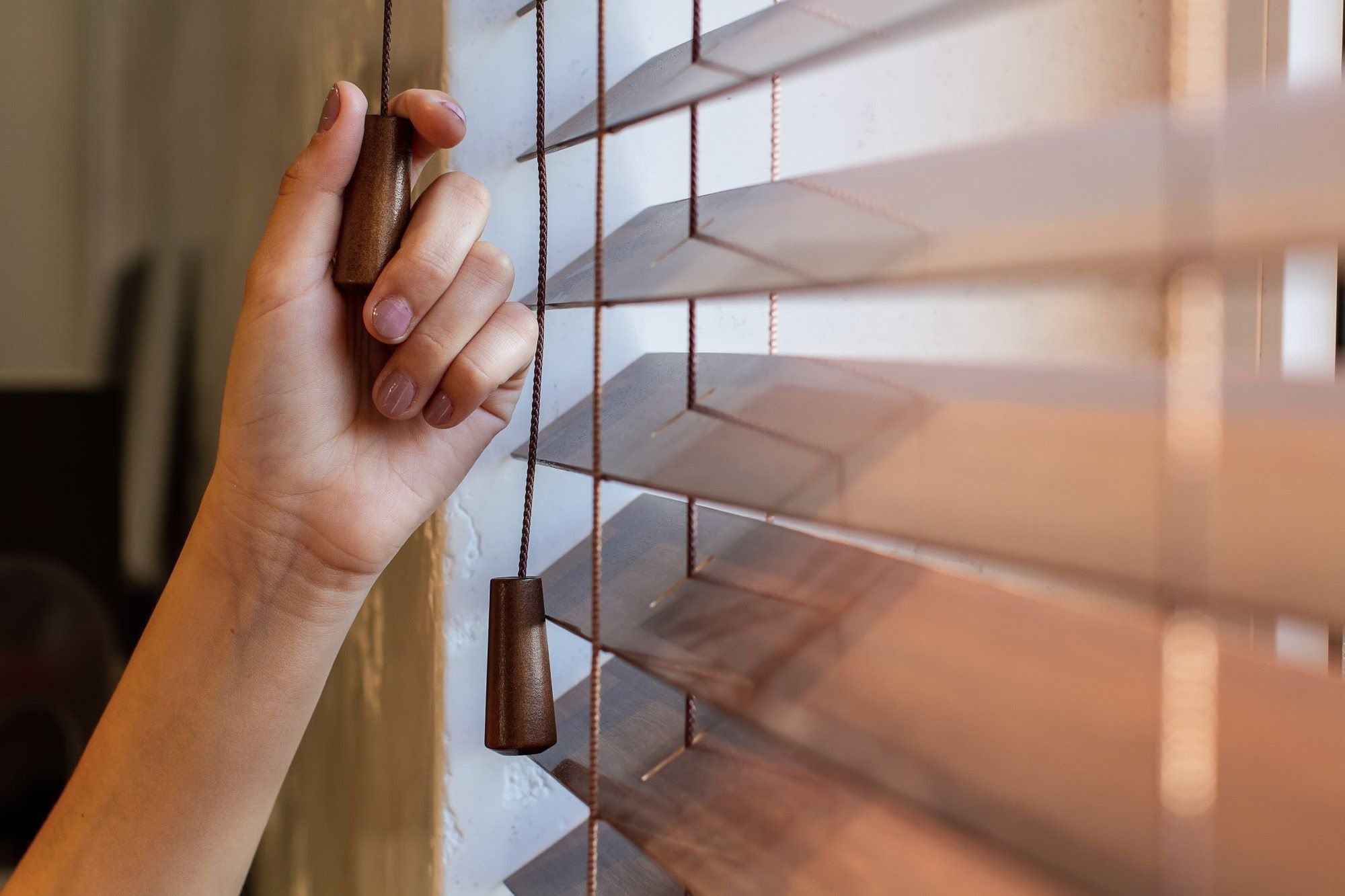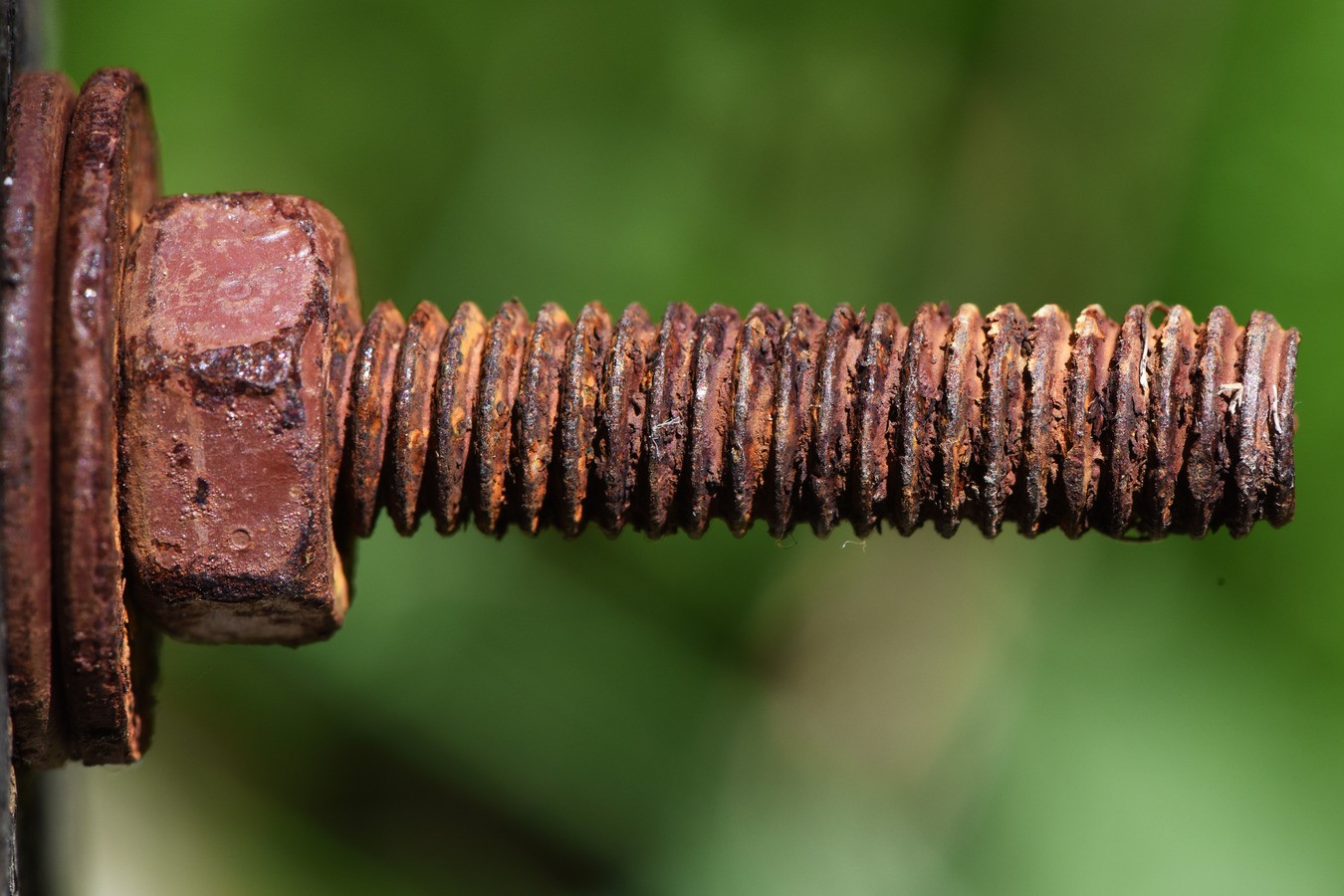Home>Home and Garden>How To Remove Grass Stains
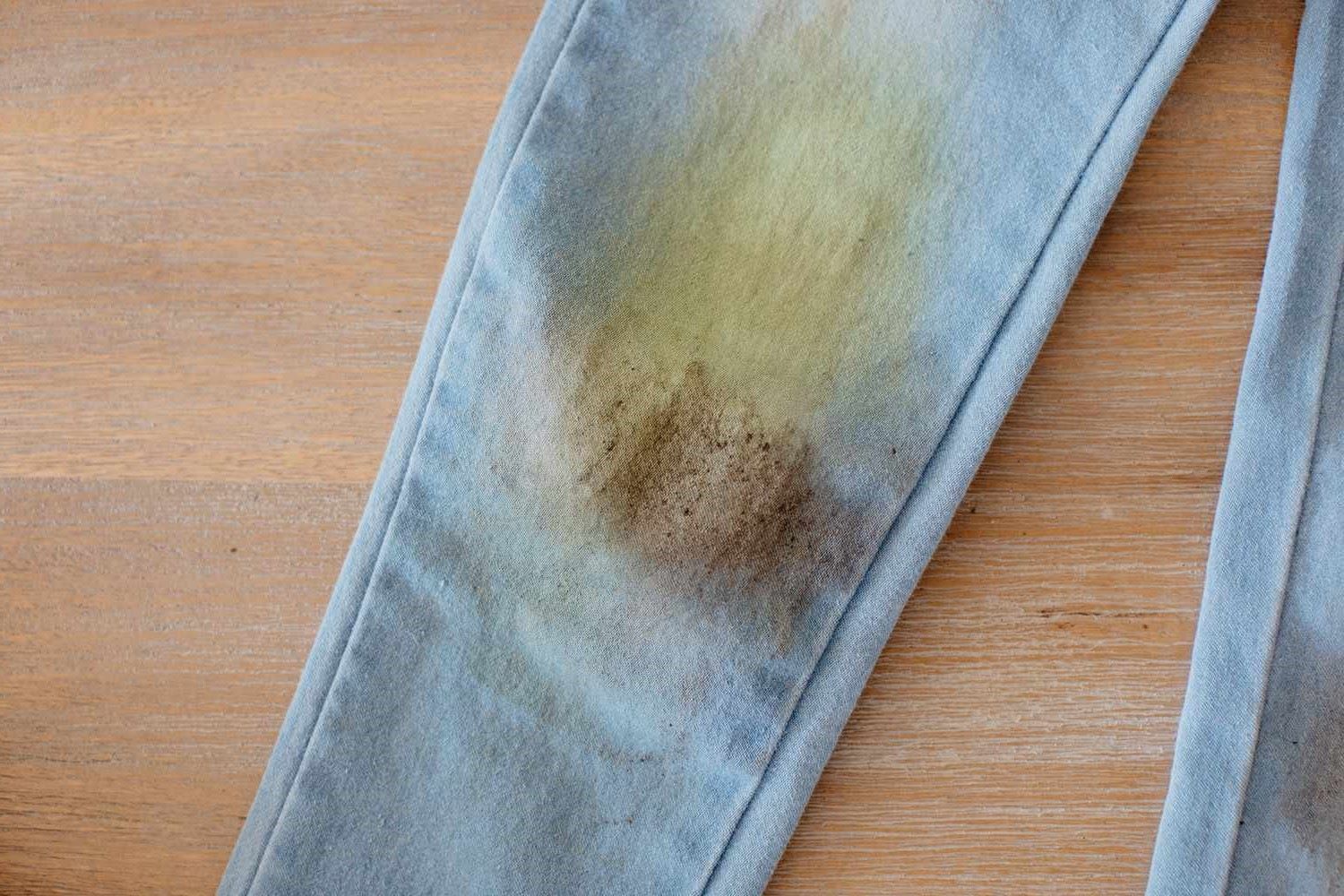

Home and Garden
How To Remove Grass Stains
Published: March 1, 2024
Learn effective methods for removing stubborn grass stains from your clothes and fabrics at home. Discover simple home and garden solutions to keep your items looking fresh and clean.
(Many of the links in this article redirect to a specific reviewed product. Your purchase of these products through affiliate links helps to generate commission for Noodls.com, at no extra cost. Learn more)
Table of Contents
Introduction
Grass stains are a common nuisance that can quickly turn a pristine outfit or upholstery into a discolored mess. Whether you enjoy outdoor activities, have kids who love playing in the yard, or simply appreciate the beauty of a well-maintained lawn, encountering grass stains is almost inevitable. However, with the right knowledge and techniques, you can effectively tackle and remove these stubborn stains, restoring your belongings to their former glory.
In this comprehensive guide, we will delve into the world of grass stains, exploring their composition and the best methods for pre-treating and removing them from various surfaces. From clothing to shoes and upholstery, we will equip you with the expertise needed to combat grass stains effectively. Additionally, we will provide valuable tips for preventing grass stains in the first place, helping you maintain a clean and vibrant environment.
By the end of this article, you will have a thorough understanding of grass stains and the confidence to address them with ease. So, let's embark on this journey to conquer grass stains and reclaim the pristine appearance of your cherished items.
Read more: How To Remove Bleach Stains
Understanding Grass Stains
Grass stains, those pesky green splotches that seem to appear out of nowhere, are the result of chlorophyll and other plant pigments binding to the fibers of fabric or upholstery. When grass is crushed or brushed against a surface, the chlorophyll and other pigments are transferred, leaving behind a stubborn stain. These stains are particularly challenging because chlorophyll contains natural dyes that adhere strongly to fabrics and materials, making them difficult to remove.
The composition of grass stains makes them unique among common stains. Unlike food or beverage stains, which often contain oils or proteins, grass stains are primarily composed of plant-based pigments. This distinction requires a specialized approach to effectively remove them without causing damage to the affected items.
Understanding the nature of grass stains is crucial for implementing the most suitable pre-treatment and removal methods. By comprehending the components of these stains, individuals can tailor their stain-fighting strategies to address the specific characteristics of grass stains, ultimately achieving optimal results.
In the following sections, we will explore pre-treating and removal techniques tailored to combat the resilient nature of grass stains on clothing, shoes, and upholstery. Armed with this knowledge, you will be well-equipped to tackle grass stains effectively and restore your belongings to their pristine condition.
Pre-Treating Grass Stains
Pre-treating grass stains is a crucial initial step in the stain removal process. By addressing the stains promptly and employing the right techniques, you can significantly enhance the effectiveness of subsequent removal methods. Here's a comprehensive guide to pre-treating grass stains on various surfaces:
Clothing
- Act Quickly: As soon as you notice a grass stain, act promptly. Blot the stain with a clean cloth to absorb excess moisture and prevent it from setting further into the fabric.
- Pre-Treatment Solution: Create a pre-treatment solution by mixing equal parts of liquid laundry detergent and water. Gently apply the solution to the stained area, ensuring it saturates the fabric. Allow it to sit for 10-15 minutes to penetrate the fibers and loosen the stain.
- Laundering: After pre-treating, launder the garment as usual, using the warmest water suitable for the fabric. Check the care label for specific instructions. Ensure the stain is completely gone before drying, as heat from the dryer can set any remaining residue.
Shoes
- Brush Off Excess Grass: Use a soft-bristled brush to remove any visible grass clippings or debris from the shoes. This prevents the grass from being ground further into the material during the pre-treatment process.
- Vinegar Solution: Mix equal parts of white vinegar and water to create a pre-treatment solution. Dab the solution onto the grass-stained areas of the shoes using a clean cloth. Allow it to sit for 10-15 minutes to help break down the stain.
- Rinsing: After pre-treating, rinse the shoes with cold water to remove the vinegar solution and any loosened grass stains. Allow the shoes to air dry before assessing the effectiveness of the pre-treatment.
Read more: How To Remove Turmeric Stains
Upholstery
- Vacuuming: Begin by vacuuming the upholstery to remove any loose dirt or debris, ensuring a clean surface for pre-treatment.
- Dish Soap Solution: Mix a few drops of dish soap with warm water to create a gentle pre-treatment solution. Using a clean sponge or cloth, lightly dab the solution onto the grass-stained areas of the upholstery.
- Blot and Air Dry: After pre-treating, blot the treated areas with a clean, dry cloth to absorb excess moisture and any lifted grass stains. Allow the upholstery to air dry completely before assessing the effectiveness of the pre-treatment.
By following these pre-treatment techniques tailored to specific surfaces, you can effectively prepare grass-stained clothing, shoes, and upholstery for the subsequent removal steps. This proactive approach sets the stage for successful stain removal, increasing the likelihood of restoring your items to their pristine condition.
Removing Grass Stains from Clothing
Grass stains on clothing can be particularly frustrating, as they often stand out prominently and can be challenging to remove. However, with the right approach, you can effectively tackle these stubborn stains and restore your garments to their original condition.
Step 1: Act Quickly
As soon as you notice a grass stain on your clothing, it's essential to act promptly. Begin by blotting the stained area with a clean cloth to absorb any excess moisture and prevent the stain from setting further into the fabric. Avoid rubbing the stain, as this can spread it and make removal more difficult.
Step 2: Pre-Treatment Solution
Create a pre-treatment solution by mixing equal parts of liquid laundry detergent and water. Gently apply the solution to the stained area, ensuring that it saturates the fabric. Allow the pre-treatment solution to sit for 10-15 minutes, allowing it to penetrate the fibers and loosen the grass stain.
Read more: How To Remove Deodorant Stains
Step 3: Laundering
After pre-treating the grass stain, launder the garment as usual, using the warmest water suitable for the fabric. Check the care label for specific washing instructions. It's important to ensure that the stain is completely gone before drying the garment, as heat from the dryer can set any remaining residue.
Step 4: Assessing the Stain
After laundering, carefully inspect the garment to determine if the grass stain has been completely removed. If any traces of the stain remain, avoid drying the garment and repeat the pre-treatment and laundering process until the stain is effectively eliminated.
By following these steps and being diligent in the pre-treatment and laundering process, you can effectively remove grass stains from clothing and restore your garments to their pristine condition. Remember, acting promptly and employing the right techniques are key to successfully combating grass stains on clothing.
Removing Grass Stains from Shoes
Grass stains on shoes can be particularly stubborn, as the texture and material of footwear often make the stains challenging to remove. Whether it's your favorite sneakers or a beloved pair of casual shoes, effectively addressing grass stains is essential to maintain their appearance. Here's a detailed guide on how to remove grass stains from shoes:
Step 1: Brush Off Excess Grass
Begin by using a soft-bristled brush to gently remove any visible grass clippings or debris from the shoes. This initial step helps prevent the grass from being ground further into the material during the pre-treatment process.
Step 2: Vinegar Solution Pre-Treatment
Create a pre-treatment solution by mixing equal parts of white vinegar and water. Dab the solution onto the grass-stained areas of the shoes using a clean cloth. The acidic nature of vinegar helps break down the chlorophyll and other pigments present in the grass stains.
Step 3: Rinsing
After applying the vinegar solution, rinse the shoes with cold water to remove the vinegar and any loosened grass stains. It's important to thoroughly rinse the shoes to ensure that all traces of the pre-treatment solution and loosened stains are removed.
Step 4: Air Drying
Allow the shoes to air dry completely before assessing the effectiveness of the pre-treatment. It's advisable to place the shoes in a well-ventilated area and avoid direct sunlight, as excessive heat can set any remaining grass stains.
Step 5: Laundering (if applicable)
For fabric-based shoes, such as canvas sneakers, you may consider laundering them following the manufacturer's instructions after pre-treatment and air drying. This additional step can help further remove any residual grass stains and refresh the overall appearance of the shoes.
By following these steps and being thorough in the pre-treatment and rinsing process, you can effectively remove grass stains from shoes and restore their visual appeal. Remember, prompt action and the right pre-treatment solution are crucial for successfully combating grass stains on footwear.
Whether it's a pair of athletic shoes or casual sneakers, addressing grass stains promptly and employing the appropriate techniques can help extend the lifespan and visual appeal of your favorite footwear.
Read more: How To Stripe Grass
Removing Grass Stains from Upholstery
Grass stains on upholstery can be a source of frustration, as they have the potential to detract from the overall appearance of furniture and fabric-covered surfaces. Whether it's a sofa, chair, or car interior, effectively addressing grass stains on upholstery is essential to maintain the aesthetic appeal of these items. Here's a detailed guide on how to remove grass stains from upholstery:
Step 1: Vacuuming
Begin the process by thoroughly vacuuming the upholstery to remove any loose dirt, debris, or grass clippings. This initial step ensures that the surface is clean and free from any particles that could interfere with the pre-treatment process.
Step 2: Dish Soap Solution Pre-Treatment
Create a gentle pre-treatment solution by mixing a few drops of dish soap with warm water. Using a clean sponge or cloth, lightly dab the solution onto the grass-stained areas of the upholstery. It's important to avoid excessive saturation, as this can lead to over-wetting the fabric.
Step 3: Blot and Air Dry
After applying the pre-treatment solution, gently blot the treated areas with a clean, dry cloth to absorb excess moisture and any lifted grass stains. It's crucial to allow the upholstery to air dry completely before assessing the effectiveness of the pre-treatment. Placing the item in a well-ventilated area can expedite the drying process.
Step 4: Assessing the Stain
Carefully inspect the upholstery to determine if the grass stain has been effectively removed. If any traces of the stain remain, consider repeating the pre-treatment process to further address the stubborn areas. It's essential to be thorough in this assessment to ensure that the upholstery is restored to its pristine condition.
By following these steps and being meticulous in the pre-treatment and drying process, you can effectively remove grass stains from upholstery and rejuvenate the appearance of furniture and fabric-covered surfaces. Prompt action and the right pre-treatment solution are key to successfully combating grass stains on upholstery, preserving the visual appeal of these cherished items.
Whether it's a living room sofa, dining chair, or car upholstery, addressing grass stains promptly and employing the appropriate techniques can help maintain the cleanliness and aesthetic integrity of upholstered surfaces.
Tips for Preventing Grass Stains
Preventing grass stains is often more manageable than dealing with their removal. By implementing a few simple strategies and proactive measures, you can significantly reduce the likelihood of encountering grass stains on clothing, shoes, and upholstery. Here are some effective tips for preventing grass stains:
-
Protective Clothing: When engaging in outdoor activities that involve contact with grass, consider wearing clothing specifically designed for outdoor sports or activities. Garments made from moisture-wicking and stain-resistant fabrics can provide a protective barrier against grass stains. Additionally, opting for darker-colored clothing can help minimize the visibility of any potential stains.
-
Use Protective Gear: For activities such as gardening, lawn mowing, or sports, consider using protective gear such as aprons, knee pads, or gardening gloves. These items can shield your clothing and skin from direct contact with grass, reducing the risk of stains and minimizing the impact of grass-related activities.
-
Stain Repellent Treatments: Applying a quality stain repellent or fabric protector to clothing and shoes can create a barrier that helps repel grass stains. These treatments form a protective shield on the fabric, making it easier to wipe off any grass stains before they set in.
-
Prompt Cleaning: After outdoor activities, promptly address any grass-stained clothing or shoes. Promptly rinsing or pre-treating the affected items can prevent the stains from setting and becoming more challenging to remove. Quick action can make a significant difference in preventing grass stains from becoming permanent.
-
Lawn Maintenance: Regularly maintaining and mowing your lawn can help minimize the presence of long, dewy grass that is more likely to cause stains. Keeping the grass at a moderate length reduces the likelihood of contact with clothing and upholstery, thereby lowering the risk of grass stains.
-
Designated Play Areas: If children frequently play on the grass, consider designating specific play areas with artificial turf or other protective surfaces. This can help contain the potential for grass stains and provide a designated space for outdoor activities.
-
Upholstery Protection: When hosting outdoor gatherings or events, consider using protective covers or blankets on upholstered furniture to shield them from grass stains. This proactive measure can help preserve the appearance of your outdoor furniture and minimize the impact of grass-related activities.
By incorporating these preventive measures into your routine, you can minimize the occurrence of grass stains and maintain the cleanliness and appearance of your clothing, shoes, and upholstery. These proactive strategies not only reduce the likelihood of encountering grass stains but also contribute to a more enjoyable and stress-free outdoor experience.
